
Once you step into the world of occult and horror, you find a lot more than vampires. Darkness comes in all shapes and sizes. Even innocent-looking children are really creatures of the night out to get you. Many horror characters are bewitched beings in human form. And, if you come across a samurai while you’re in this dark, misty place, don’t ask him for help.
Any haunted child with big eyes makes for a very spooky character. Making someone who seems so innocent look so creepy gives the audience the chills. Dress her up in something old-fashioned, with curls, lace, and lots of flounces. Then, add a touch of the macabre. Sometimes, it’s dark circles under the eyes. Other times, it’s a disquietingly gray tone to the skin. What makes this girl so alarming is her stuffed toy rabbit—complete with hangman’s noose wrapped around its neck. Her “comfort” toy.




When you have an infestation of monsters, he’s your man. His motto is “Why screw around with knives and stakes when you can blow a watermelon-size hole through a zombie’s head?” And some of his guns pack time-delayed explosives instead of bullets. They lodge into the skull—tick, tick, tick and then KA-BOOM!! Splat—all over the lawn. It’s not pretty, but it gets the job done. Call him if you need him. He’s in the yellow pages. Of course, keep in mind that while he might sound like a good guy—and maybe was once—he has grown to enjoy killing so much that he has become as warped and violent as those he hunts.
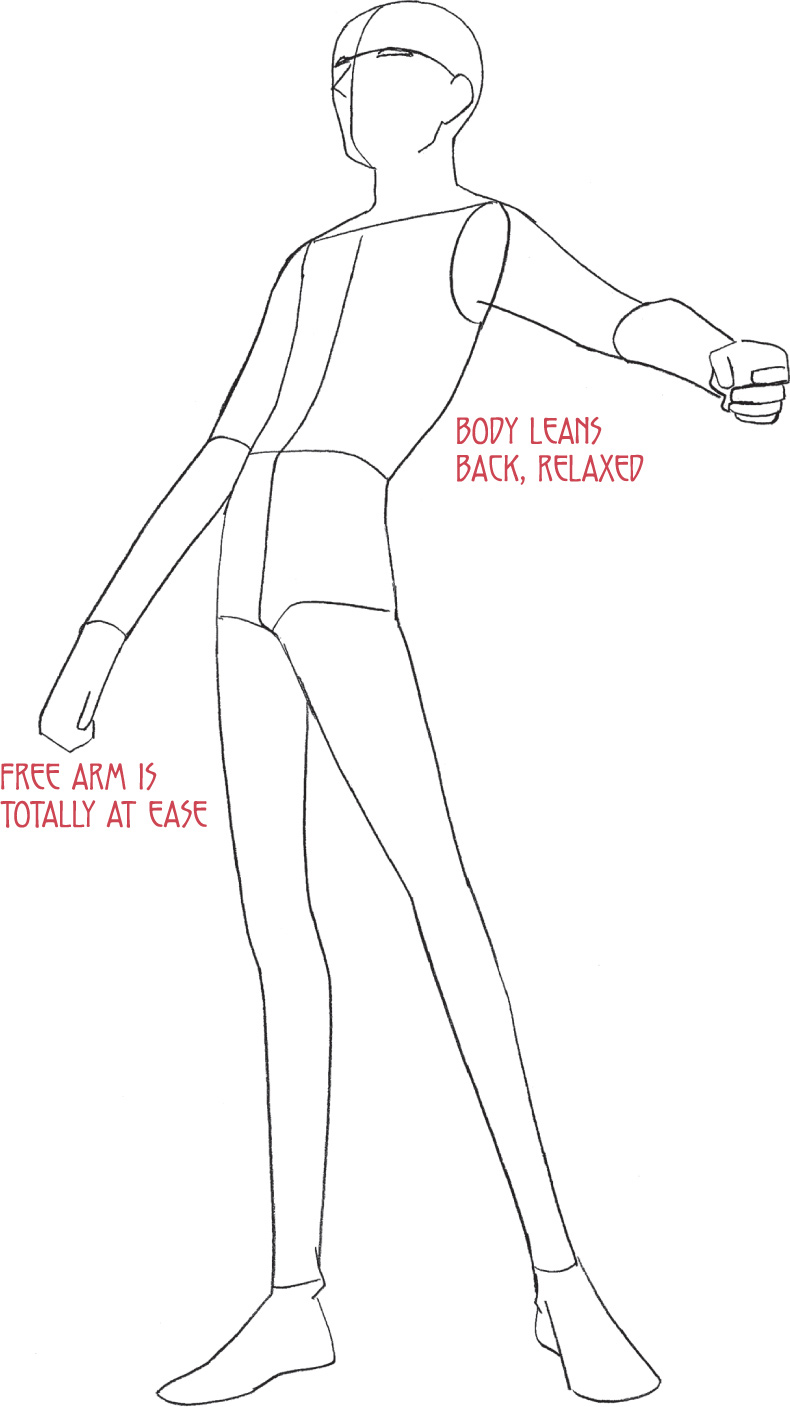


Another popular motif throughout the horror genre—and one that dates back to the 1800s—is the idea that men of science who experimented with combining the human and animal kingdoms were playing God—and would suffer for their arrogance. This experimentation was crossing the line into the very nature of good and evil.
In these stories about splitting the human soul into good and evil, evil flourished. It released something uncontrollable. This theme evolved to where we are in narratives today: The act of “splitting” has sometimes been abandoned as a story device, but the hybrid human-animal form remains. And it’s evil.
Although you see it done sometimes, it’s best not to mix animal types—for the sake of clarity. It’s best to choose one animal type and combine it with a human. A bird of prey, a lizard, or a predator of any sort is a good choice.



Cat girls are already a little weird, although they remain very popular characters. And though they originally belonged to the shoujo style of manga, it doesn’t take much to turn them into full-fledged occult figures. A few occult symbols and a cloak and hood are all that are needed. Being of the animal kingdom, this creature would be found deep in some enchanted forest, perhaps serving as a guide to help lost souls find their way out. And, by successfully doing so, she might break the spell that has kept her in bondage and thereby resume her natural, beautiful human form.

Note the chibi-style proportions, with an extra-large, round head and a petite body.


There’s always one suck-up in a group, and this guy’s it. When he finds out that someone in his gang is a vampire, he quickly reasons that he might end up as a blue plate special. So, he immediately kisses up to the vampire, turning into his personal butler in order to get the monster to spare his hide. What an unctuous personality. To reflect this, his posture and pose must be craven. Heck, he’s already on his knees! His chest should be curved inward and his limbs spindly. Not exactly a beaming example of manhood. He looks up from under his eyelashes, sort of sideways, at his master—hoping, with a half-smile, for mercy and favor. He may even get some—for the moment. But just when he feels safe and secure, he’ll be struck down. There’s no loyalty when you sign an oath with the devil.



Samurai are generally thought of as noble: the Eastern version of the Knights of the Round Table. However, some samurai did fight on their own, and these rogue samurai were called ronin. They were not nice guys—not nice at all. They didn’t help old ladies cross the street. And when they sliced off people’s heads, they didn’t warn them first. Guess which type we’re going to draw today? That’s right, the bad kind. The kind who kills and likes it.

This samurai is sturdily built, not lean and long like other more elegant, sophisticated occult characters. He’s shorter and fairly low to the ground in order to retain superb balance when executing spinning and twisting moves. Notice that the construction of this figure is slightly stockier than the other male figures we’ve been working with.


We humans have puppies for companionship. Guys and gals from the Dark World have little, squeezable, freaky companions. Yes, they’re a bit … weird looking. But you didn’t expect a dragon-woman to carry a Chihuahua in her purse, did you?
These puffy little critters aren’t so evil, really. And they’re easy to draw. They add humorous relief to an otherwise melodramatic genre. They can fly, float, and spring into and out of this dimension in a heartbeat.

FUZZBALL BAD KITTY
Note that hands and fingers are unnecessary on extra-round characters.

COWBOY POTATO INVADER
Sometimes, you can go all-out silly, just for laughs, even in a spooky genre.
HALLOWEEN RABBIT

FLYING PLAY PET
This little companion is drawn in a style more in keeping with that of her occult owners—and less as a comedic sidekick.
Into every good story comes a stranger. Who is he? What does he want? How much does he know? Is he good or bad? Is he working for the underworld or for himself? We are left to guess, but one thing’s for sure: His entrance upsets the equation. His purpose is to throw the story into high gear, to add the element of surprise. He’s the random card, the joker. Now the deck is shuffled. Let the game begin.
This guy is dressed a little out of sync with the genre, which makes his appearance all the more notable. Into the darkness comes this stylishly dressed man. As with everything else about him and his restrained personality, he is concealed by his clothes. He is a tall, quiet type but not easily intimidated. He will stare down danger without taking a step back. Take a swing at him and you’ll be looking up at him from the ground with a bloody lip before you know what hit you.




I personally find wizard characters very alluring and mysterious. You can’t tell whether they’re going to cast a good spell on you or curse you with some terrible affliction—perhaps even change you into an animal. The hooded robe is a classic costume for a sorcerer or sorceress. The veiled look underscores the enigmatic aura of the character. The long staff is also a classic. Stay away from wands, which are for fairy godmothers. The slit in the long dress shows us that we’re in the occult genre, where dark and mysterious characters are still attractively drawn.

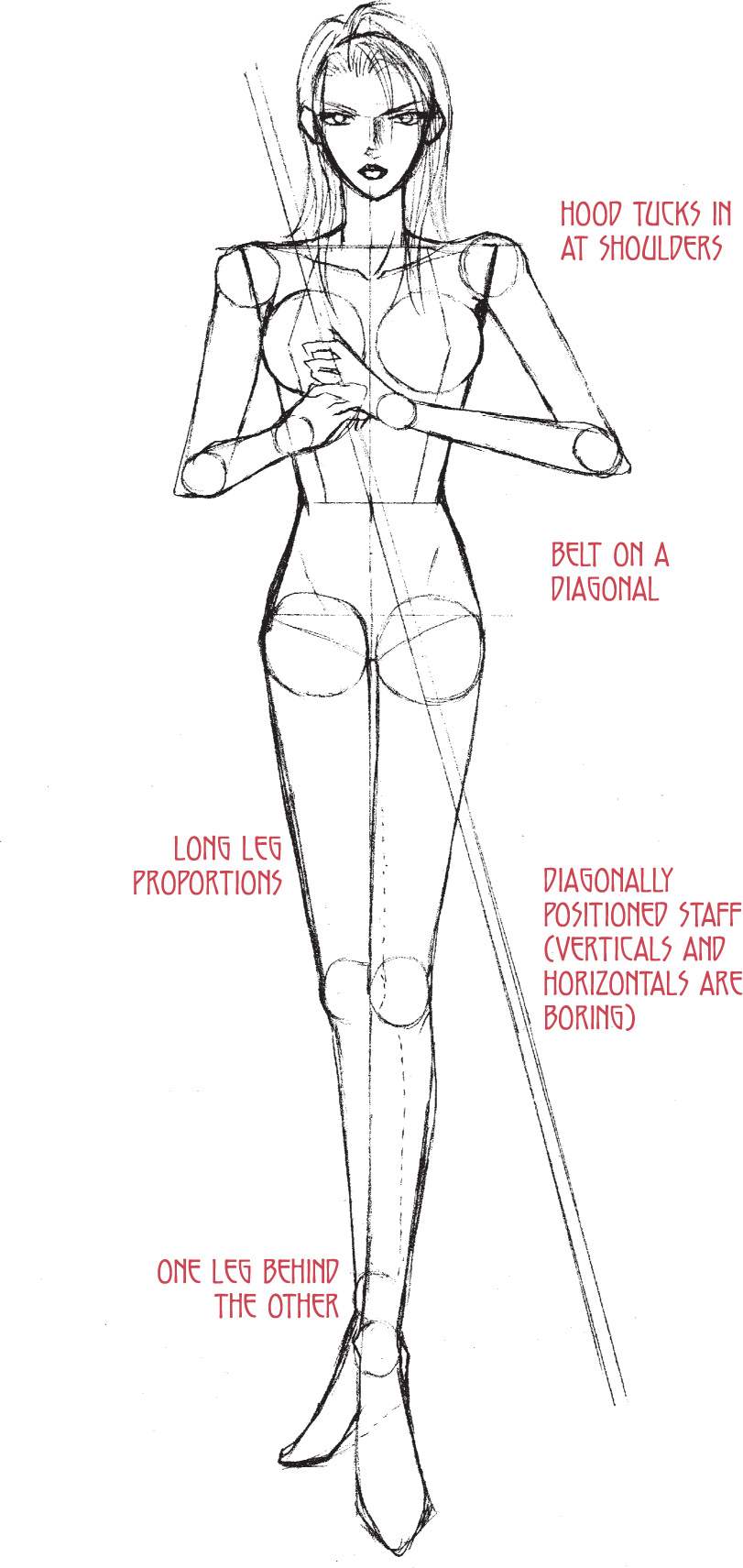


One of the more interesting characters in manga is the demon beast. Once a human but now under the spell of a wicked magician, this person-turned-beast roams the land, forever doomed to inhabit the world in animal form. His terrible condition makes him angry, furious, vicious. He has lost everything: his true love, his family, his humanity. But every so often, a flicker of light enters his dark heart when he sees someone in trouble, and he comes to the rescue.
You might ask yourself, If he’s such an interesting character, why don’t we see more of him? This is something I learned as a screenwriter in Hollywood, and it applies to all good storytelling, including both manga and American-style comics: When you have something special that’s very effective, resist the impulse to use it all the time.
To illustrate: Do you remember the classic Christmas movie It’s a Wonderful Life starring Jimmy Stewart? What character springs to mind first? For me—and for most people, I suspect—it’s Clarence the angel. But Clarence only appears at the tail end of the rather long film. Yet he was so memorable, we tend to think that the film was all about his relationship with George, Jimmy Stewart’s character. It wasn’t. However, if the screenwriter had written Clarence into the picture in the first act and called the movie Here’s Clarence!, I can guarantee you we would not be watching reruns of the film every Christmas Eve on television some fifty years later.
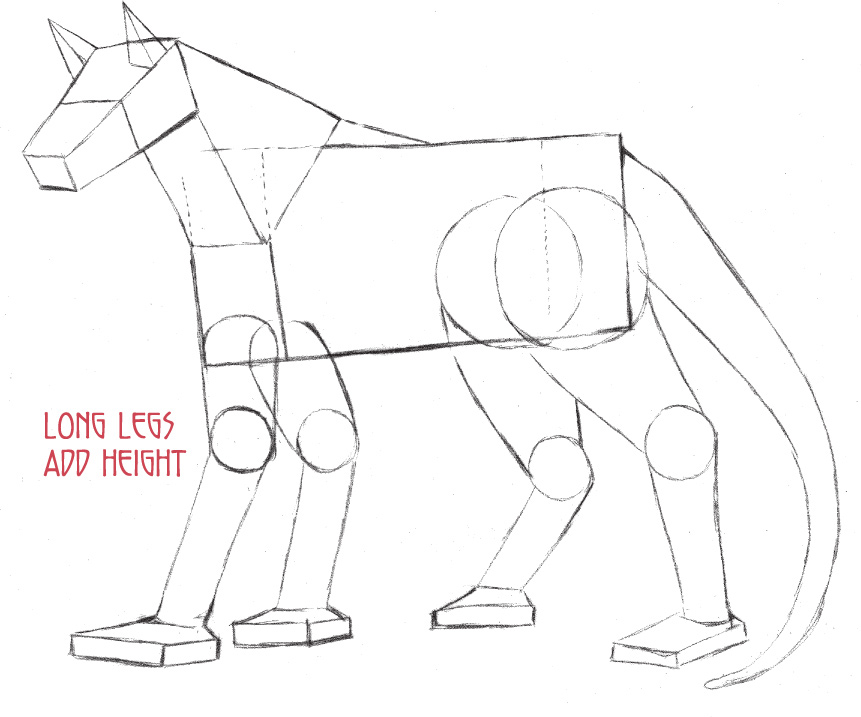
Here’s a little-known fact about wolves that can help you draw them so that they look different than dogs: Wolves have longer legs than dogs. This gives them that gangly, creepy look that works so well in the horror genre. Note that the long, thin tail is a fantasy addition not seen on true wolves.
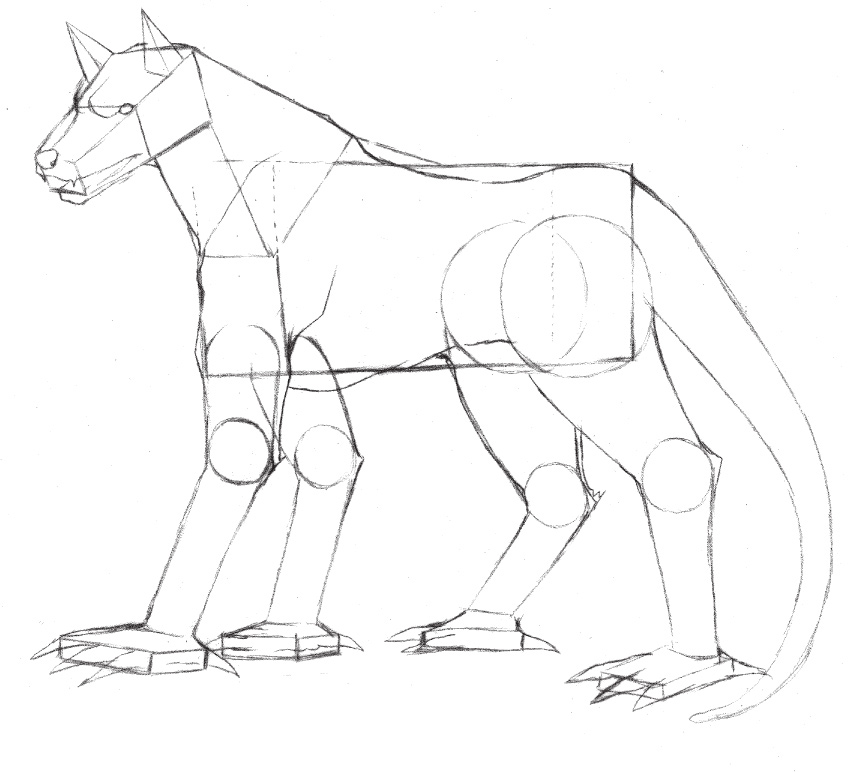
Ears placed a little more forward on the head than normal give him an alert look. Long, sharp claws on the paws are, as with any obvious mutation, a good way to enhance the creature. The objective is to move the animal away from its true look and into the fantasy realm of the occult.
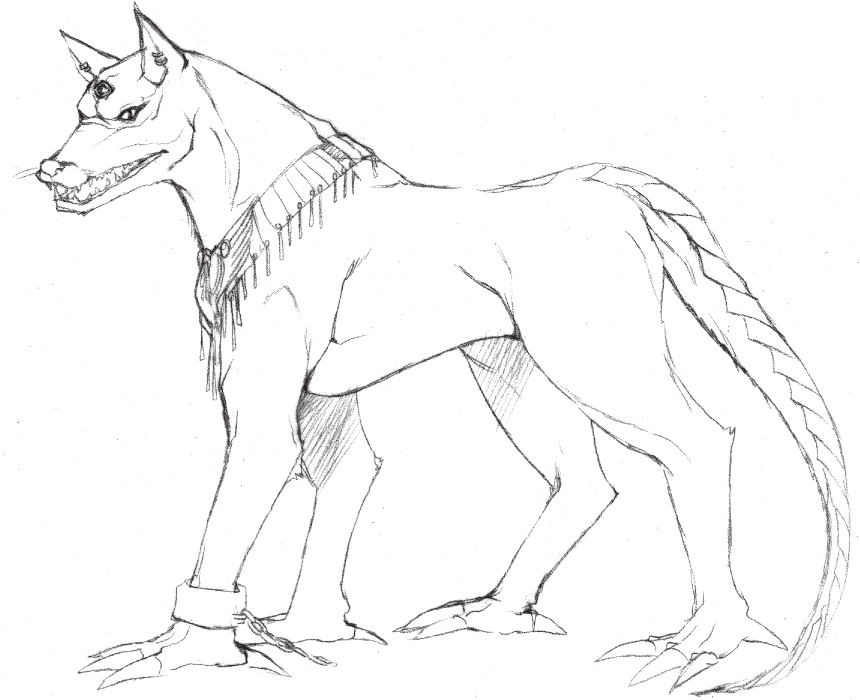
The collar is not utilitarian but seems to have a symbolic design. The jewel in the middle of the forehead conveys a magical power or symbolic meaning (your readers don’t even have to know what it means—all they have to know is that this ain’t no regular animal). The prisoner-type metal cuff on the front left ankle is symbolic of his cursed condition, and the braided tail takes another character-design step into the fantasy realm.

This type of character can often choose to communicate with one person through his thoughts—no one else can hear him.
She looks like any other woman, except that she’s from the Land of Darkness. It’s important to keep the following in mind: It works better to make a demon girl pretty and sweet looking, rather than ugly and repulsive. If she’s ugly and repulsive, the reader can simply dismiss her. But if she’s attractive and sweet, the reader will have ambivalent feelings about her and will stay engaged in the story.
Still, there are those pesky little reminders of who she really is, such as the devil ears and the tail. You won’t find items like these on the girl-next-door character.

Always draw both legs completely when they’re crossed in order to get the correct positioning—otherwise, you’re asking for trouble. Here’s why: The dress is already covering some of the legs. One of the legs crosses over the other, obscuring parts of both legs from view. But by drawing both complete legs, you’ll have no doubt where everything goes.

Add some rudimentary features, for placement purposes. Then, smooth out the outline of the body, and lightly erase some of the guidelines. But you don’t have to eliminate all of them. Remember, it’s a sketch. It’s supposed to stay a bit messy.

Attractive occult costumes for women boast four basic characteristics: They’re modestly skimpy but not inappropriately so, frilly and/or lacy, evil (with occult symbols, jewelry, and so on), and naughty.

Your future is revealed in the cards. She deals them, one by one. A card is turned over. It reveals prosperity and health. The next card, wisdom and love. Your card is next. What shall it be? Life or death? Your world is in her hands. Dare you ask? Dare you look?
This character is more than a mere fortune-teller. She’s a seer. A “looker” into the future. Her dress, her companions, her surroundings, and even the props around her should all shroud her in mystery and magic. Her key is a very special deck of cards that only she can read. Were you to take the deck from her hands and look at it, all you would see would be blank cards, for your eyes are not ready to grasp all that your future holds. It would be too much for you.



Creating evil in a tank is no small feat. It takes a huge amount of liquid, a group of scientists, and many tubes and monitors. This is a popular conceit in manga, as well as in American comics and horror movies. Here, the female creature, in a state of suspended animation, floats in a tank while the scientists take copious notes, regulating her life-support systems.

Bunch her up, as if she were going to do a cannonball into a swimming pool. The chin is tucked down to the knees.

To show that she’s in water, have the hair float toward the surface. Be sure to draw it in a wavy manner. Note that the figure in the tank is positioned higher within the picture than the scientists. This sets her apart, making her different—an outcast among the group.

An oval-shaped or round tank doesn’t look reinforced or scientific. It looks like an aquarium. The octagonal shape is more antiseptic and allows you to draw vertical metal reinforcements with rivets. Draw lots of tubes going from the subject of the experiment to the monitors outside of the tank.
To highlight her solitary condition, blacken the background. The white, vertical stripes are purely a design element that adds a sense of energy to the scene, which is otherwise compelling but static.
She gets her powers and commands from the dragon. Once, she was a princess, about to marry on the far side of a golden lake when she was captured in the talons of the flying beast and brought to its cave. Now, under the dragon’s spell, she steals away each night and returns to her castle to retrieve precious gems that make the dragon’s powers grow stronger still.

For possessed characters, draw stiff posture, straight up and down, with the chin held up. Tilt the head back slightly, and show the hands in a servile position, as if holding a tray. The eyes are open and looking forward—but are unfocused.

The power of the amulet causes it to float above her hands.

Use visual cues to tell the reader about the character. (This is how an artist tells a story.) Here, as this character becomes less princesslike and more dragonlike, draw her to look more like a dragon, so the reader can see what’s happening to her. Since dragons have wings, give her wings. Design armor elements that echo the scales of the dragon’s skin. Put horns, like dragon horns, on her shoulder guards. This develops a consistent theme.

Especially in the occult style, gray and black can be as effective as color, because of the tone of the subject matter. Still, great color is dazzling, which is why all covers of manga graphic novels are in color. (See this pages–this pages for more on the colors of manga occult and horror.)